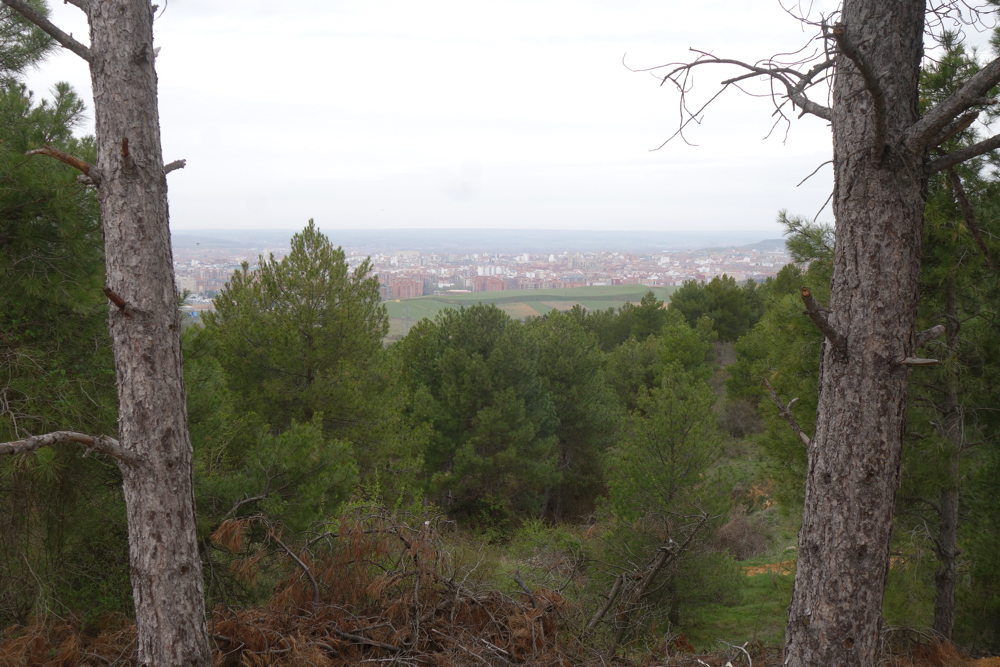A couple from Cairo, an oil guy and his wife, were leaving the hotel in Mansilla de Las Mulas at the same time we were, somewhere around seven. They were doing the Camino too, or at least part of it, and they wanted a cup of coffee before hitting the road, just like us. There was not much open on a Sunday morning but we found a place where it looked like the same scene had played out there everyday for the last century. Regulars at the bar and others stopping for a cup, tostada and conversation. A woman came in with the day’s papers and set the stack on the bar, one copy of four different newspapers (one devoted to sports), copies that patrons would share throughout the day.
The Cario couple had their coffee outside on the patio because the woman smoked. They left the same time as we did and the guy informed us that we had a 200 meter climb ahead of us before we reached Leon. That’s nothing really but he said we had been spoiled by the flat trail the last few days.
We walked through the old Roman wall, across the river, and out of town. We passed through Villamoros (village of the Moors) and climbed some hills that led into the woods before our dramatic decent into Leon. An outdoor mass was taking place in front of the Cathedral in front of a statue of Santiago. So why did Spain adapt Santiago as their patron Saint? There is another facet to this story, the Santiago Matamoros legend.
The apostle Jamesa appears as a miraculous figure at the legendary Battle of Clavijo, helping the Christians conquer the Muslim Moors. The story was invented centuries after the alleged battle took place but it provided one of the strongest ideological icons in the Spanish national identity.
Teresa of Ávila, the mystic, was a worthy contender for patron saint but the Santiaguistas won the debate. Santiago Matamoros or Saint James the Moor-slayer it is. Onward.
Leave a comment
